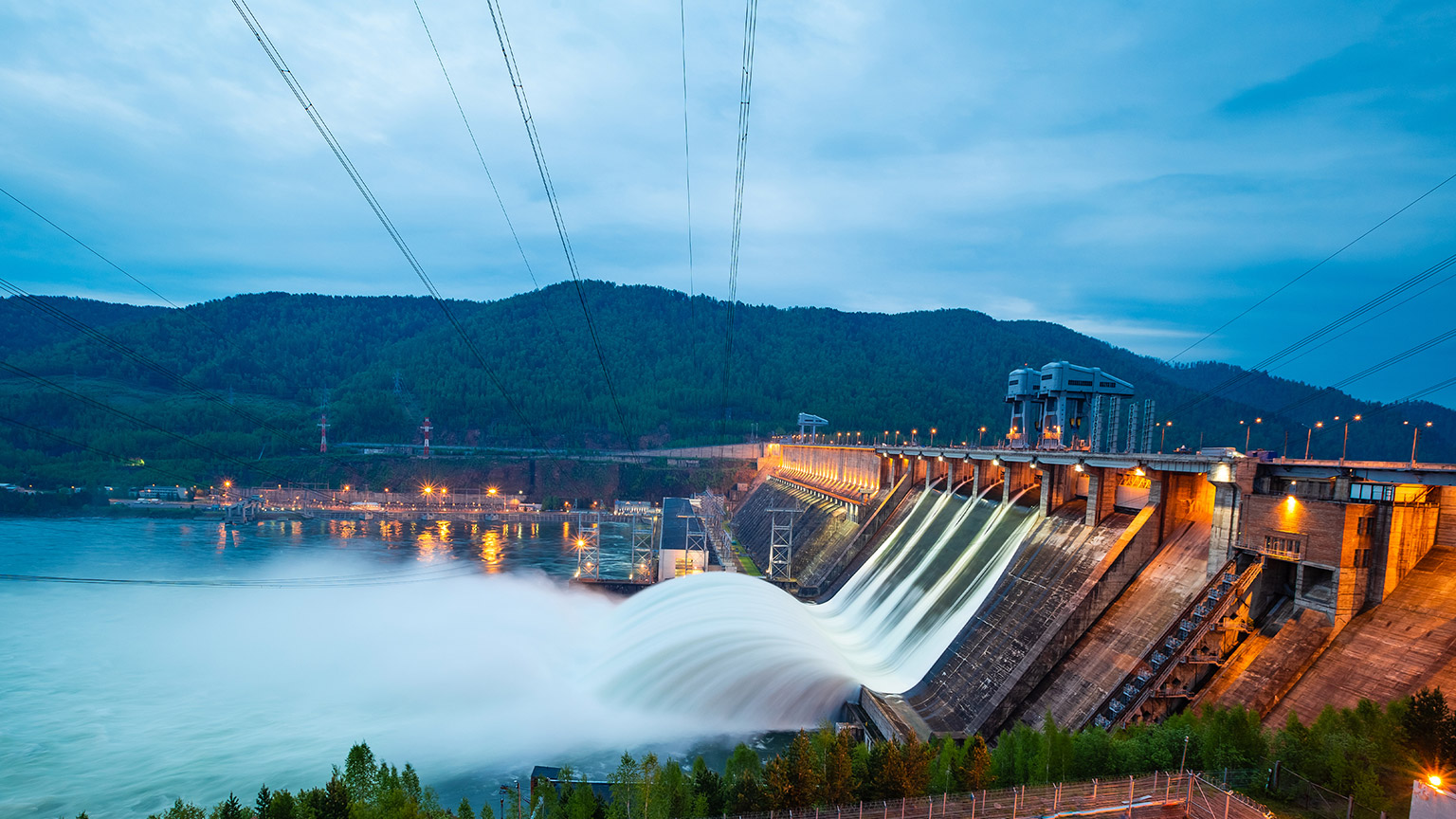You will begin by learning about the National Grid and how electrical energy is generated, transmitted and distributed in New Zealand. Safety while working at high voltage will be highlighted here.
What we're covering:
- How electricity is generated in New Zealand
- The National Grid
How is electricity generated in NZ? How does it reach our homes and workplaces?
In New Zealand, the process of getting electricity from start to finish through to your home or business goes through four different stages: generation, transmission, distribution and retail/user.
Generation
Generation is the process of creating electricity through different methods such as hydroelectric, geothermal, gas, wind, solar, coal and diesel. There are six major generation companies and over 200 generation plants, responsile for creating New Zealand’s electricity from a range of sources. The primary method is hydro which accounts for approximately half of New Zealand’s electricity generation. Over 80% of New Zealand’s electricity is generated from renewable sources.
Transmission
The electricity generated by power stations is transmitted through high-voltage transmission lines throughout the country. These lines make up a network known as the National Grid, consisting of more than 12,000 km of high-voltage transmission lines and more than 170 substations. The transmission network is carried by the big pylons and lines you may have seen throughout the countryside.
Some large industrial users of electricity receive their power directly from the national grid, but most consumers receive power via regional distribution companies. Most of the grid operates on the high voltage alternating current (HVAC) system, but there is also a high voltage direct current or HVDC link between the North Island and the South Island, which includes the Cook Strait cable. Voltages are typically 110 to 220 kV before being reduced (stepped down) at local substations to levels that make it suitable for distribution to commercial and residential areas.
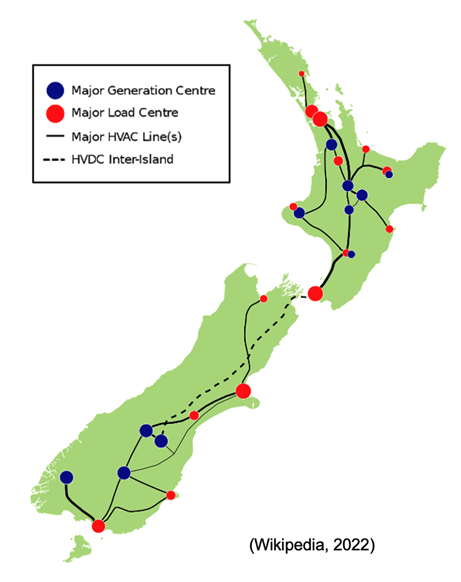
Supplementing the major 110 or 220 kV transmission lines are sub-transmission lines and cables, operating at lower voltages such as 33 kV, 50 kV and 66 kV. These sub-transmission lines supply provincial towns and cities with electricity from the 220 kV grid, and also connect smaller power stations to the grid.
The national grid is owned, operated, maintained and developed by Transpower, a state-owned enterprise.
Most of New Zealand's electricity is generated from renewable energy sources (like hydro and wind). These energy sources are located in remote areas, a long way from where most of the population lives. The national grid is important in transporting electricity to where it is required.
Distribution
Power is transformed into lower voltages (25,000 volts or less) at substations and transported by distribution companies to homes and businesses. Before entering your home or business, the voltage is further reduced to 240/120 volts making it safe for typical residential and commercial use. Power is typically delivered to homes and businesses through overhead powerlines or underground cables.
Almost all consumer premises in New Zealand are connected to a distribution network. Keeping the network in reliable, working order is the job of distribution companies, or lines companies. Each region of NZ has an allocated company responsible for maintaining the power lines and power poles (both above and underground) in their area and making sure the lines have enough capacity to cater for each customer.
Retail
An electricity retailer is a company that buys power on the ‘electricity market’ at wholesale prices, packages it along with transmission and distribution costs, then on-sells it to consumers. The amount a retailer charges to the end user includes:
The cost of the electricity supplied to the consumer – a variable charge calculated on usage. (The electricity meter at your house records the amount of electricity you use.) Charges for transmission and line charges – usually a fixed amount.
There are 31 energy retailers in NZ, all with different methods of charging, so it is worth shopping around to choose who to buy your power from.
How is Electricity Made?
Power stations contain large machines called turbines, which are turned very quickly. Large amounts of energy are needed to turn the turbines. This energy comes from burning fossil fuels, moving water or wind. The spinning turbine causes large magnets to turn within copper wire coils – these are the generators. The moving magnets within the coils of wire cause the electrons to move within the coils of wire creating electricity.
Steam turbine generators, gas turbine generators, diesel engine generators and alternate energy systems all operate on the same principle:
magnets + copper wire + motion = electrical current
The electricity produced is the same, regardless of the source.
Watch the following videos which look at the basics of power generation.
Where does my power come from?
How do hydro stations work - Meridian Energy
Activity
This video shows you how to make your own Hydroelectric Generator. You will have the opportunity to make something similar in class with your tutor’s guidance. Make notes on the equipment you will need, and the steps required to make the generator.
How to generate electricity from water
Match the energy source; convertor; and final stage to each method of power generation.
Study the residential power bill on the following page.
- Who is the retailer?
- What is the address of the house?
- How much is the daily fixed charge? What does this charge cover?
- What is an ICP number? Does this change if you move house?
- How does this company charge for actual electricity used?
- When is the most expensive time to use electricity? Why do you think this is?
- What does ‘controlled energy’ refer to?
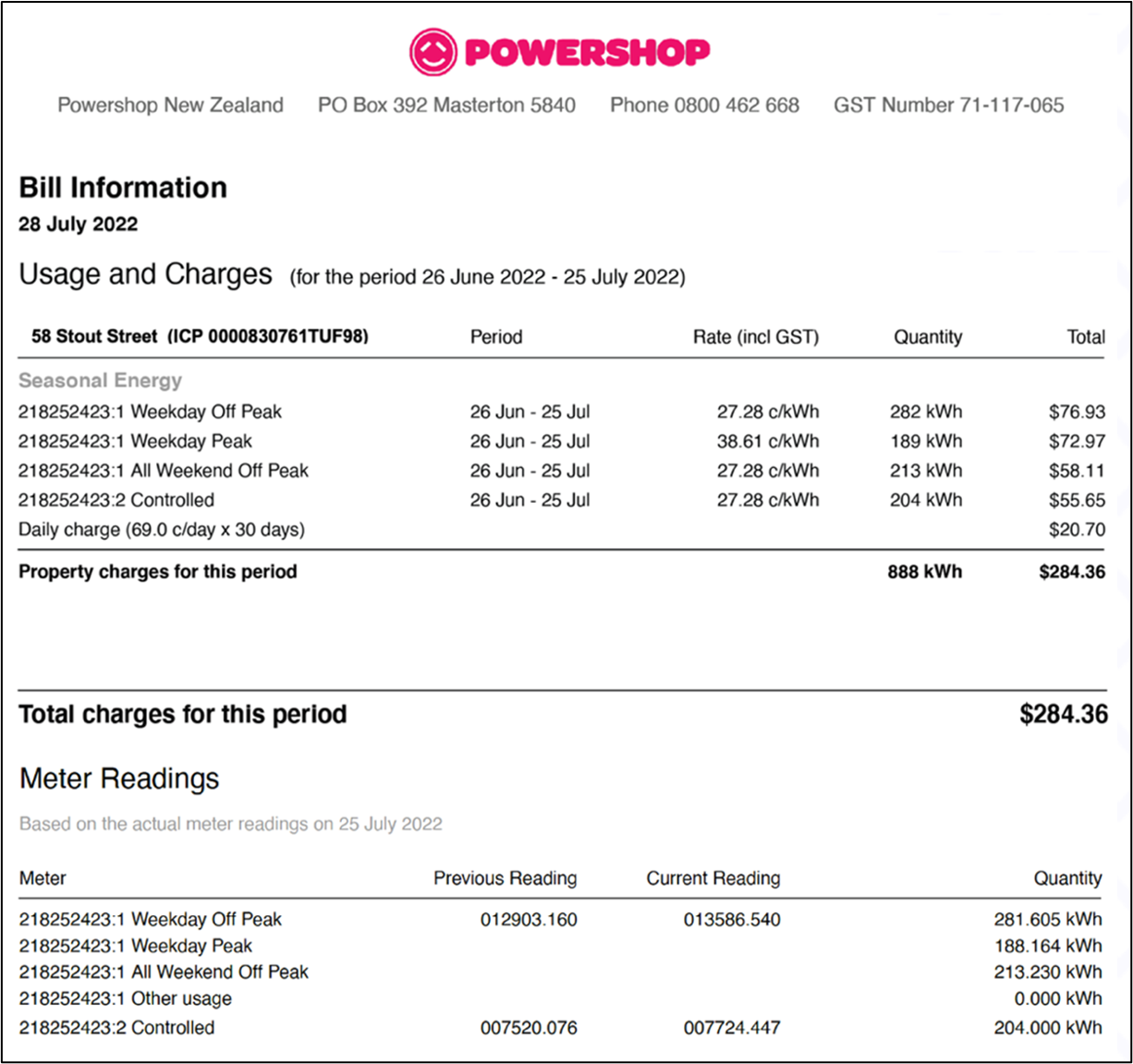
Now compare the rates charged by Powershop either to your own provider, or to Vector below.

This bill includes a charge for the Electricity Authority Levy.
- What does this cover?
- What is the daily charge?
Bring your answers to class to compare with your classmates and check with your tutor.

What we are covering:
- what high voltage lines are
- where they are found
- the dangers of high voltage
We are going to begin this lesson with a sobering story about a young Australian electrical worker who tragically lost his life when he was exposed to arcing electricity from high voltage lines when performing a routine electrical task.
You can watch 'Young worker safety: Tim's story' here.
According to the Electricity (Safety) Regulations 2010, high voltage (HV) means voltage exceeding 1,000 volts AC or 1,500 volts ripple-free DC.
(Ripple voltage refers to the amount of AC voltage that appears on a DC voltage.)
High voltage is used for electrical power distribution. The electricity generated at the power plant passes through a ‘step-up’ transformer converting it into high-voltage electricity (110 or 220 kV) before travelling around the national grid. Once the electricity reaches its destination, a second transformer ‘converts the electricity back to a lower voltage safe for homes and businesses to use.
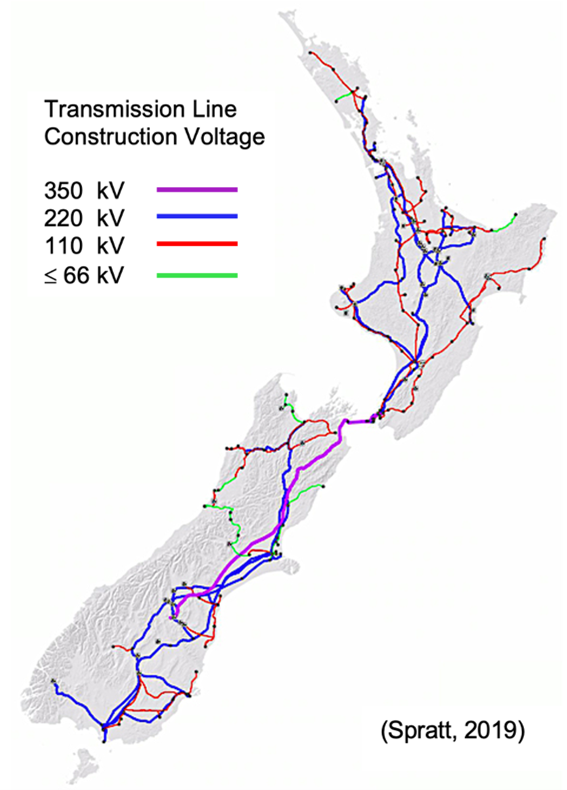
Activity
Carry out some research to find answers to these questions, then write a brief explanation for each in your own words.
- Why is power is transmitted at high voltage?
- Why is power transmitted as AC rather than DC?
Pylons – or electricity transmission towers – are the structural supports that carry the network of high-voltage overhead power lines around NZ. Pylons are usually made from galvanised steel, due to its strength. Transmission lines consist of uninsulated aluminium/steel or aluminium alloy stranded conductors. These conductors are insulated from the tower by porcelain or glass insulators.
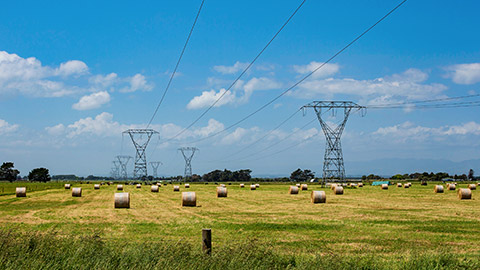
Since transmission lines are uninsulated, it is important that nothing come close enough to cause an electric arc. An arc can start a fire and cause a serious outage. At the voltages used for power transmission, a tree doesn’t need to touch the line to create an arc.
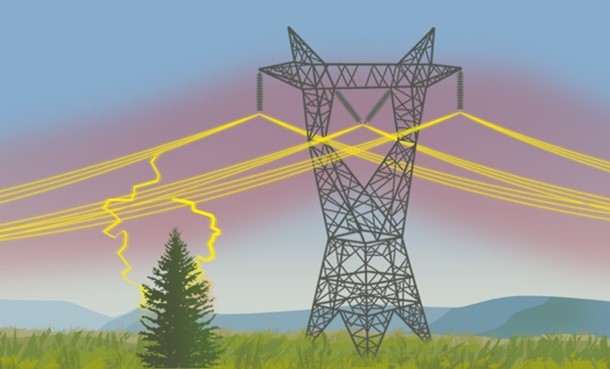
The average height of pylons in our national grid is 55 m. The heavy electric cables must be kept at least 11.5 m above ground to maintain safety from the powerful electric and magnetic fields generated around them.
Shorter, wooden poles have a limited voltage capacity and run a fire risk if exposed to extreme heat. They require regular maintenance to ensure that they are not rotting or deteriorating. Wooden utility poles commonly carry distribution lines.
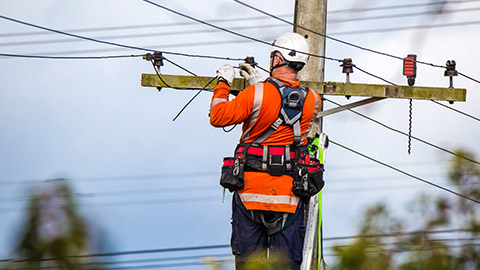
Note: Towers carrying live conductors should never be climbed in case the tower is energized.
The Dangers of High Voltage
In Module 1 we looked at the general hazards of electricity, i.e., electric shock, burns, fire and arc or explosion. Similar hazards are present at high voltage; however, the possibility of serious injury or damage is greatly increased. For example, a person providing a path for a high voltage through their body will be subject to burns but is also likely to burst into flame, owing to the heating effect of the current being passed through him or her.
High voltage conductors are likely to carry high currents and therefore run at much higher temperatures than low voltage conductors, so extra care must be taken to prevent burns or fires.
The most significant electrical shock and fire hazards are due to the fact that at high voltages a current can arc or “jump” (like lightning) across quite significant spaces — at 25 kV a current can jump 25 cm. Direct contact with an electrical conductor is not necessary for a person to receive a shock or for a fire to start from the discharge.
Watch the short clip of an electrician disconnecting high voltage wiring - the Arc Flash almost touches him.
You should avoid any machinery, people or equipment coming within a ‘safe distance’ of transmission lines. The New Zealand Electrical Code of Practice for Electrical Safe Distances (NZECP 34:2001) sets these distances at within 4 m of overhead power lines and 6 m of overhead transmission lines.
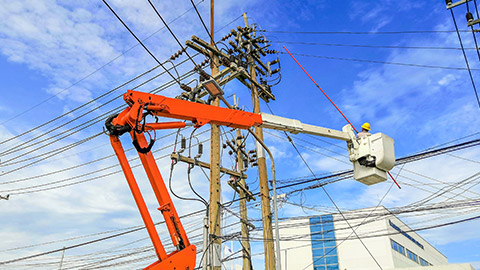
Contact with, or near proximity to, a high voltage conductor can occur when operating vehicles with a long boom, e.g., a crane or mobile elevated work platform, or by people carrying long conductive objects, e.g., metal ladders or scaffold poles.
You should also take care when working at height – your initial safe distance may be reduced once you commence work at an elevated level.
Given the high risks involved, there should always be at least two people present during high voltage work, with both being aware of the responsibilities they hold and the emergency procedures which may need to be carried out.
The physical risk controls required for working on high voltage plant or equipment must be explicitly specified by the authorized person in the permit to work.
Isolation should be by means of a device that has a safe isolating gap between live parts and those that have been made dead for work to be carried out. Earthing conductors at the point where the supply is disconnected are essential and additional earths may be necessary at the place of work.
General physical risk controls when working in the vicinity of high voltage should include:
- Isolation of the plant or equipment being worked on, including the means to ensure this remains isolated, such as locking off.
- Discharge of conductors and equipment to remove any residual electrical charge that could be present.
- Earthing of the part of the electrical system being worked on to ensure that a dangerous voltage cannot occur on it.
- Caution during storms or strong winds - transmission towers may become energized due to the conductivity of water and live conductors may fall down.
Activity
Activity
Equipment and conductors that carry high voltage have specific safety requirements and procedures. Find out what PPE must be worn by linesmen working at HV.
Post your answers on the class forum.
